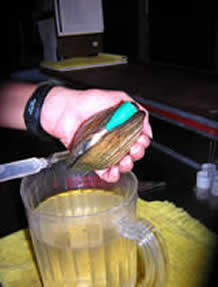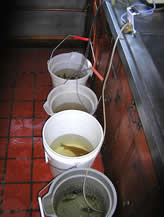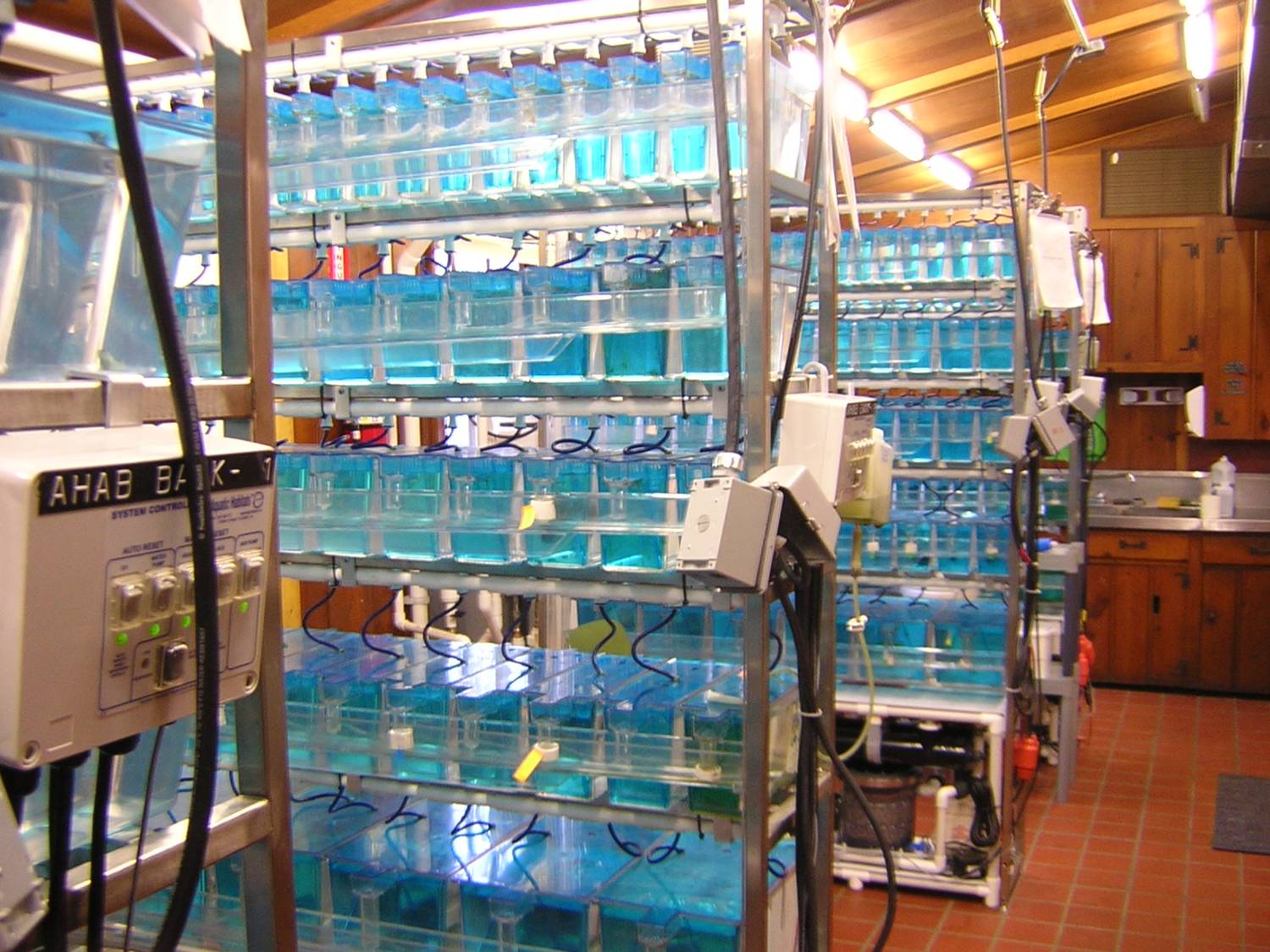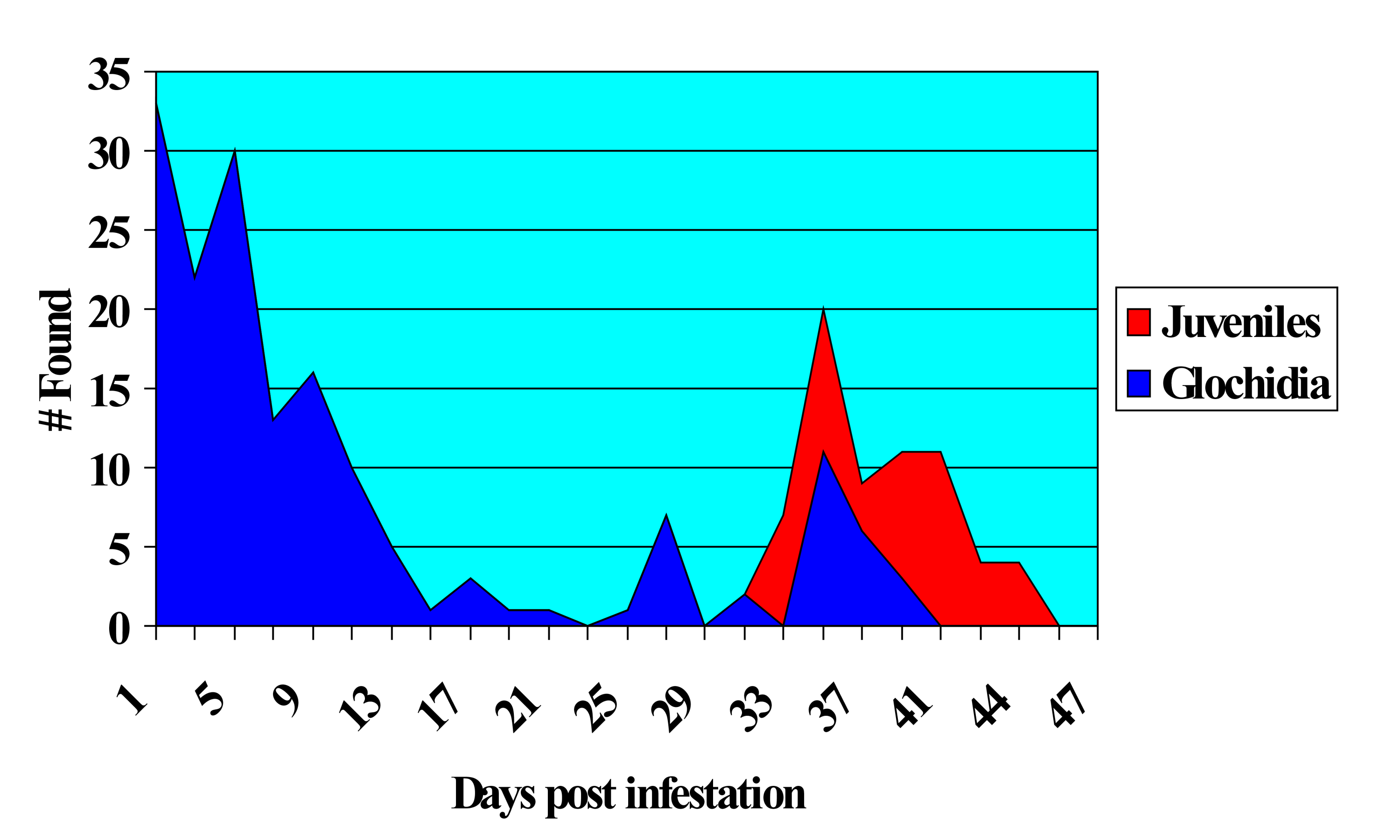

Click for SALT TEST VIDEO.



The great majority of unionids require a vertebrate host for larval transformation. Without the right host in the right place at the right time, these mussels will never recruit. Obviously, any attempt to manage or conserve these animals must include the determination of their proper (or at least potential) host. Below is one way to identify hosts for mussels.
Most host identifications are conducted in labaratory settings. Hosts identified by this method are suitable for propagation, but may not be natural hosts. That is, they may not necessarily serve as hosts in the wild.
| 1. Find a gravid female mussel. Here the glochidia-charged marsupia may be seen between the mantle flaps of Lampsilis ovata. (for movies of display behavior, see the Videos). | |
 |
2. Remove glochidia. The mussel is gently held open by the blue object. A water-filled syringe is inserted into the marsupia. As water is released, glochidia are flushed from the mussel into the high tech glochidial retention system. Between injections, the mussel is placed back in water to minimize damage to her gills. |
 |
3. The salt test. Glochidia are infective if they react to salt crystals (arrow) dropped in the water near them. In this video you will see glochidia snapping shut when a salt crystal begins to dissolve. Notice the speed with which the glochidia are able to close. Glochidia are little more than two shells and a single large adductor muscle, and their sole purpose is to attach to a host. Click for SALT TEST VIDEO. |
 |
4. If glochidia are infective they are placed in containers of water from the fish holding systems (AHABs). The water should be near the same temperature as the water in which the mussel was held. Fish are placed in the containers along with an airstone to agitate the water. It is usually not a good idea to place large predaceous fish such as bass in the same buckets as small lunch fish such as darters. Fish are held in the containers for ~1/2 hour. |
 |
5. Once parasitized, fish are placed by species in individual aquaria. We use AHAB units -- self-contained, temperature-controlled recirculating systems. Fish are fed daily. |
| 6. Water from aquaria pass through filters in the back (white baskets). The filter catches dead glochidia and transformed juveniles. | |
 |
7. For at least a week after infection dead glochidia will fall from the fish (blue). These are either glochidia rejected by the immune system of non-host fish, or weak and damaged glochidia from hosts. If the fish is a suitable host, eventually transformed juveniles will drop from the fish (red). This may occur from days to months after infection depending on the mussel, fish, and water temperature. Transformed juveniles differ from glochidia in possessing a pair of adductor muscles (glochidia only have a single muscle) and a foot. Healthy juveniles will be quite mobile. |